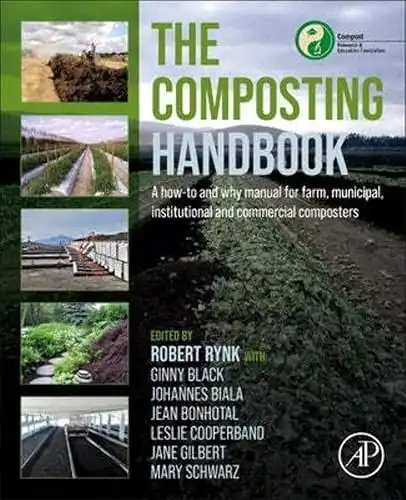Looking for a handy Carbon-Nitrogen Ratio List to guide your composting efforts? In this article, you’ll find a comprehensive table of C:N ratios for everything from food waste to manures—and even a simple calculator to help you mix materials.
C:N Ratio Calculator
Please note this is a beta version. In future iterations, we plan to improve the styling, make the material selectable, but for now you can see C:N ratios for common materials below. We suggest using the average number where there is a range.
See instructions below on how to use.
Instructions:
- Enter the first material name.
- Enter the carbon value. For example, if the C:N ratio is 20:1, enter 20.
- Enter the volume. It doesn’t matter what volume you use e.g. kilo, litres e.t.c.
- Click add material to identify additional materials.
- When you have finished adding materials, click calculate.
Carbon: Nitrogen ratios for food waste
| Organic Material | C:N Ratio | Source |
| Cocoa shells | 22:1 | On-Farm Composting Handbook |
| Coffee Grounds | 20:1 | On-Farm Composting Handbook |
| Corn cobs | 56:1 -123:1 (Average: 98:1 | On-Farm Composting Handbook |
| Food waste | 14:1 -16:1 | On-Farm Composting Handbook |
| Fruit waste | 15:1 – 35:1 | Pavlis, Compost Science |
| Poultry carcasses | 5-1 | On-Farm Composting Handbook |
| Vegetable produce | 19:1 | On-Farm Composting Handbook |
| Vegetable waste | 11:1 to 13:1 | On-Farm Composting Handbook |
Carbon: Nitrogen ratios for grasses, straws and hays
| Organic Material | C:N Ratio | Source |
| Alfalfa | 18:1 | LibreTexts |
| Alfalfa pellets | 15:1 | Pavlis, Compost Science |
| General straw | 48:1-150:1Average: 80 | On-Farm Composting Handbook |
| Oat straw | 48:1-98:1 | On-Farm Composting Handbook |
| Wheat straw | 100:1-150:1 | On-Farm Composting Handbook |
| Legume hay | 15:1-19:1Average: 16 | On-Farm Composting Handbook |
| Rye grass | 30:1 | LibreTexts |
| Grass Clippings | 9:1-25:1 Average:17 | On-Farm Composting Handbook |
Carbon: Nitrogen ratios for woody materials
| Organic Material | C:N Ratio | Source |
| Paper from domestic use | 127-178 | On-Farm Composting Handbook |
| Fir bark | 540:1 | LibreTexts |
| Hardwood bark | 116:1 – 436:1 | On-Farm Composting Handbook |
| Softwood bark | 131:1-1,285:1 | On-Farm Composting Handbook |
| Redwood sawdust | 1020:1 | LibreTexts |
| Corrugated cardboard | 563:1 | On-Farm Composting Handbook |
| Sawdust | 200:1-750:1 | On-Farm Composting Handbook |
| Shrub trimmings | 53:1 | On-Farm Composting Handbook |
Carbon: Nitrogen ratios for manures
| Manure | C: N Ratio (Modern Farmer) | C: N Ratio Average (On Farm Handbook) |
| Cow | 25:1 | 19:1 |
| Horse | 20:1 | 30:1 |
| Humanure | 10:1 | 6:1 – 10:1 |
| Poultry | 7:1 | 6:1 (for laying hens) |
| Sheep | 15:1 | N/A |
| Swine | 12:1 | 14:1 |
| Turkey | N/A | 16:1 |
Carbon: Nitrogen ratios for other organic materials
| Organic Material | C:N Ratio | Source |
| Blood meal | 3:1 | Pavlis, Compost Science |
| Fresh weeds | 10:1 – 30:1 | Pavlis, Compost Science |
| Leaves | 40:1-80:1 | On-Farm Composting Handbook |
| Oak leaves | 26:1 | Compost Fundamentals |
| Peat moss | 58:1 | Compost Fundamentals |
| Pine needles | 60:1 to 110:1 | Compost Fundamentals |
| Seaweed | 5:1-27:1 | On-Farm Composting Handbook |
| Yard waste | 30:1 | Pavlis, Compost Science |
Why this guide?
In our guide to the Carbon: Nitrogen ratio, we took an in-depth look at the role of the essential nutrients in composting. As discussed there, you CAN compost with a wide range of C: N ratios.
What’s more, it can be difficult to find the exact C:N ratios and even when you do find them, sources can disagree on them.
C:N ratios also depend on many other factors. For example, if you are pulling weeds out, it might depend on how much soil is clinging to the roots. If you are cleaning out animal droppings, it’s going to depend on the bedding material you use.
The key here is don’t worry too much – get it roughly right, and you’ll still get great compost.
Sources
On-Farm Composting Handbook Appendix A: Table A.1
LibreTexts: Carbon/Nitrogen Ratio
Washington State University: Compost Fundamentals
Modern Farmer: Get a Load of Our Manure Guide
Robert Pavlis, 2023, Compost Science for Gardeners

